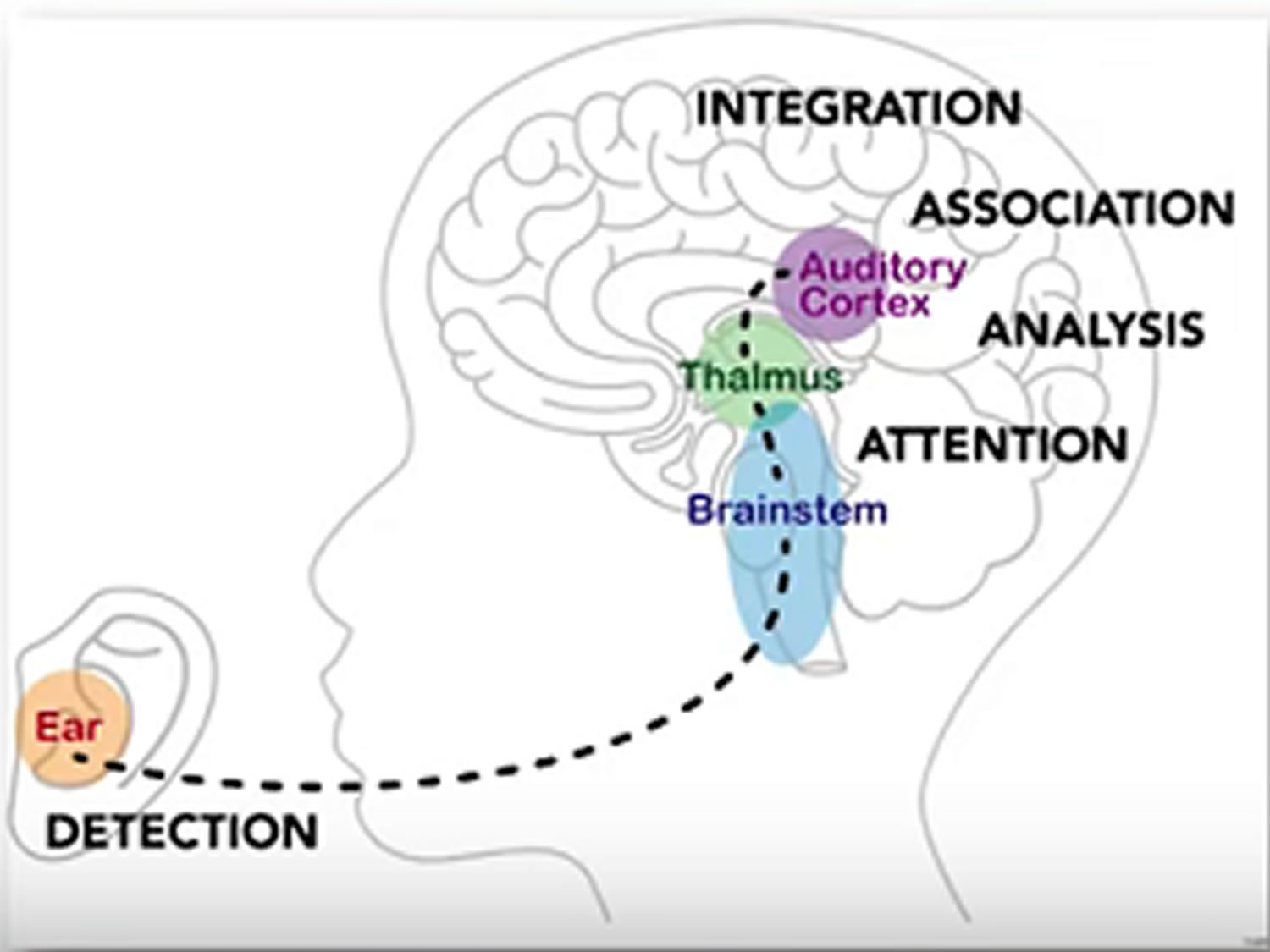

There is also a series of descending neuronal circuits within the auditory system, which allows for the modulation of auditory processing at multiple levels.

There are several levels of crossing fibers throughout the brainstem, allowing both ipsilateral and contralateral signals to contribute to the many aspects of auditory processing. Auditory information reaches the cochlear nucleus from the peripheral auditory system via the auditory nerve. A series of nuclei transmit the information to the cortex for the perception of sound to occur: the cochlear nucleus, the superior olivary nuclei, the lateral meniscus, the inferior colliculus, and the medial geniculate nuclei. The CANS extends from the cochlear nucleus in the brainstem to the auditory cortex. Patients with CAPD tend to have normal outer, middle, and inner ear anatomy with preserved function however, they have deficits in the neural processing of auditory stimuli that are not due to cognitive or higher-order language pathology. Ĭentral auditory processing disorder (CAPD) is a condition that primarily affects the CANS. Disruption of this process will result in deficits in speech perception, sound localization, auditory discrimination, and temporal characterization of sounds.

Central auditory processing (CAP) is the ability to perceptually receive stimuli within the central auditory nervous system (CANS) and conduct the subsequent neurobiological activities that give rise to the electrophysiological auditory action potentials.


 0 kommentar(er)
0 kommentar(er)
